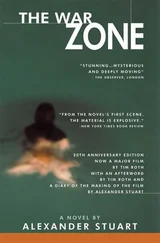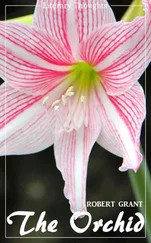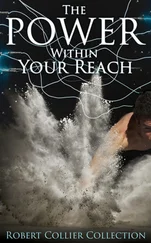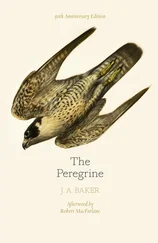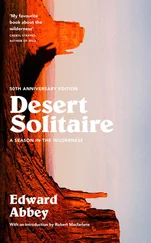There are several forms of response to these suspicions and doubts. The most obvious is the counter-assertion that Baker was absolutely fixated with peregrines. His excursions into the Essex landscape were driven by a single search image. He acquired intimate insight into the personalities of individual birds, and over the years he built up an understanding of where they would be and when. It was, therefore, ever likely that he would regularly see the falcons where others did not, and also find the remains of peregrine kills because he knew exactly their preferred haunts.
Another key point is that if you watch peregrines long enough they will do things that other people do not normally see, and even things that no one else has seen, such as eating worms. Recent research has just disclosed behaviour not widely recognised – namely that peregrines hunt and kill during the hours of darkness (Baker, incidentally, noted that the birds are active after sunset). Clearly no one would judge the recent nocturnal observations as untrue simply because they are without precedent. (At least they would find it difficult, given that the bird, an individual roosting on Derby Cathedral, was filmed eating a live woodcock, and is shown on YouTube.) Why should Baker be less trustworthy? Peregrines, however well studied, are birds of mystery still. That, surely, is the allure of all field study.
A second partial explanation of why Baker has generated such suspicion or scepticism relates to his openly declared method in writing The Peregrine . The book is framed as a diary account of a single winter, but its author clearly specified that this was a way to distil all ten years of his experiences into a narrative whole. To read the book as a blow-by-blow series of genuine journal entries is to fail to appreciate the difference between the literal truth of a notebook and the literary truth as expressed by Baker. In fact, if a reader of either of his books persists in this particular false assumption, then they will face ever-deepening problems. Baker not only compressed and manipulated the time frame of both books, he stripped out the names of places or references to identifiable land features. In The Peregrine he writes of ‘the ford’, or the ‘North Wood’ or ‘South Wood’, but nothing more explicit that would enable the reader to fix the text easily in an actual moment or location.
For Baker devotees this compositional device has given rise to a kind of sport, as they try to tease out a real geography behind the otherwise anonymous descriptions. Some landmarks are just recognisable. A reference in The Peregrine (24 October) to a ‘two-hundred-foot chimney’ where the falcon roosted is almost certainly an old brick tower, now demolished, for a steam pump attached to the waterworks in the parish of Beeleigh, just west of Maldon. On 25 January he saw a ‘wren creeping over the sloping roof of a wooden church tower’. This is probably the beautiful little church by the River Chelmer at Ulting, one of the famous wooden-towered churches of Essex. Perhaps the most important geographical feature that one can identify with some certainty is ‘the ford’, a place where many of his observations are rooted and where peregrines came to bathe regularly. The most likely candidate is the spot where Sandon Brook flows across Hurrell’s Lane just west of Little Baddow.
A rough sense of Baker’s real time frame can also be teased out from internal evidence. The inferential details that help us to anchor the work in some genuine calendar is the extreme weather he described in his single winter of observations. It is without doubt the extraordinary winter of 1962–1963, that Arctic season when snow – more than at any time for 150 years – lay thick on the ground for months. It was the coldest period recorded in southern England since 1740, and long stretches of the coast froze into solid sheets with incipient ice floes. Baker’s description of an Essex landscape snowbound from 27 December right through until the first week of March fits closely with the meteorological pattern of that period.
While these details may suggest a rough template for the book’s time and place, Baker felt in no way bound by it. The fact that he opted for this degree of freedom in his treatment of the material has led some to suggest that The Peregrine could be read almost as a novel. With more certainty we can see how the device created not just the layer of ambiguity troubling his more literal-minded readers, it also conferred a remarkable universality. If not quite timeless, the book certainly seems to move with the reader, each new generation finding the text as accessible and as meaningful as the one before. Similarly, by refusing to yoke the birds to one identifiable locale, he allows the falcons in his book to become almost as wide ranging as the real species. The glorious landscape he explored could almost be any landscape. The reader is at liberty to transfer imaginatively ‘the ford’ or the ‘North Wood’ of Baker country to Skåne, or California or Quebec, or even Queensland. By stripping away so much, what Baker left us with is a mythic story of quest for a mythic bird that is magically unconfined and yet simultaneously authentic.
In a way the deepest irony about the suggestions of fraud or deception on Baker’s part is not just their irrelevance to his project. It is that he answers the charges himself in almost every sentence he wrote. The whole of his work is shot through with an almost forensic concern for truthfulness about his encounters with birds, nature and landscape, that has few rivals not just among British writers but in the entire English-speaking world. When he looks, for instance, into the piercing lemon eyes of a little owl he notes that ‘the black pupil is the same width as the vivid yellow iris’. He finds the freshly killed body of a common shrew and notes how the ‘impressions of the kestrel’s gripping toes still showed on its soft grey fur’.
In many ways his concern for veracity is even more abundantly clear in The Hill of Summer . Its structureless format seems to emphasise how the author has pared everything down to one goal: how can a naturalist capture in words what he or she sees and experiences? It is his faithfulness to this enterprise, at the expense of all else, which probably explains why The Hill of Summer has been virtually forgotten. Yet simultaneously it is his uncompromising quest for an authentic language which supplies its curious but undeniable magic.
In The Peregrine he wrote: ‘The hardest thing of all to see is what is really there.’ That, in a nutshell, is the philosophy that informs all his work. It is notable that Baker never validates his own observations, thoughts or feelings by reference to those of other authors. There are no intermediaries. Instead, he drills down into the moment to haul back to the surface a prose that is astonishing for its inventiveness, yet also for its clarity and precision. Sometimes it is the sheer simplicity with which he finds ways to note the most subtle register of change that is so compelling. On 2 April in The Peregrine he writes: ‘Spring evening; the air mild, without edges’. On 27 March he sees a ‘grazing rabbit that was big with disease’; and on the same day he describes the sunlight as ‘quiet’. The full sentence reads: ‘Quiet sunlight gleamed the falling tide.’
The line typifies Baker’s delight in playing with the function of words. So verbs that are traditionally intransitive are suddenly made to take a direct object (‘They shone frail gold’). He converts nouns into verbs (‘Starlings … sky up violently’; ‘every twig seemed to vein inwards’), adjectives into nouns (‘Wisps of sunlight in a bleak of cloud’) and then turns full circle to make nouns out of verbs (‘a seethe of white’). Sometimes it is simple juxtapositions that create the startling energy. A classic example is, ‘gulls bone-white in ashes of sky’, or this description in The Hill of Summer for the hard, nasal, invertebrate call of a willow tit: ‘a narrow parsimony of sound’. Finally, there are neologisms of almost Shakespearean daring. Perhaps the most famous is his sentence: ‘I swooped through leicestershires of swift green light.’
Читать дальше

